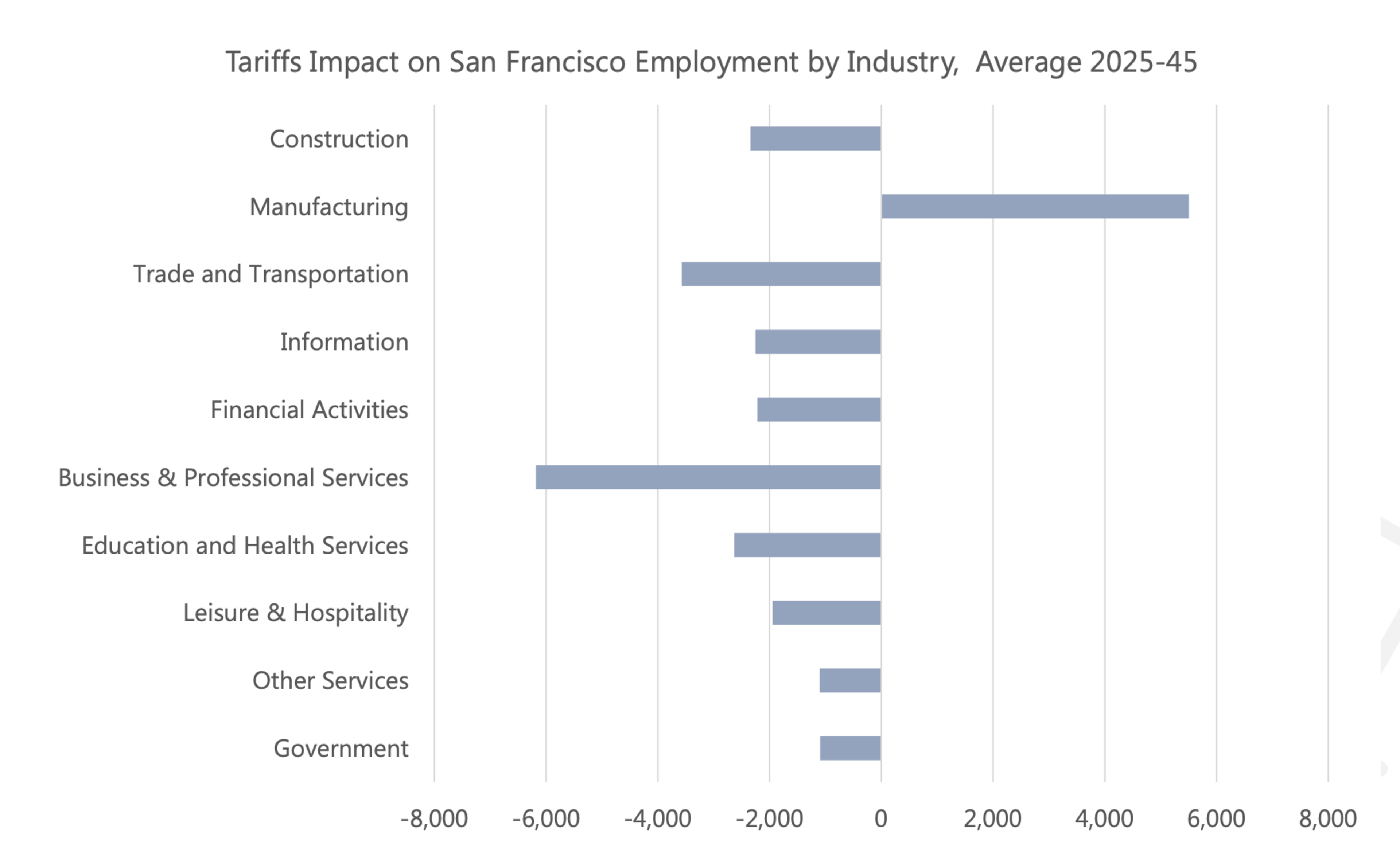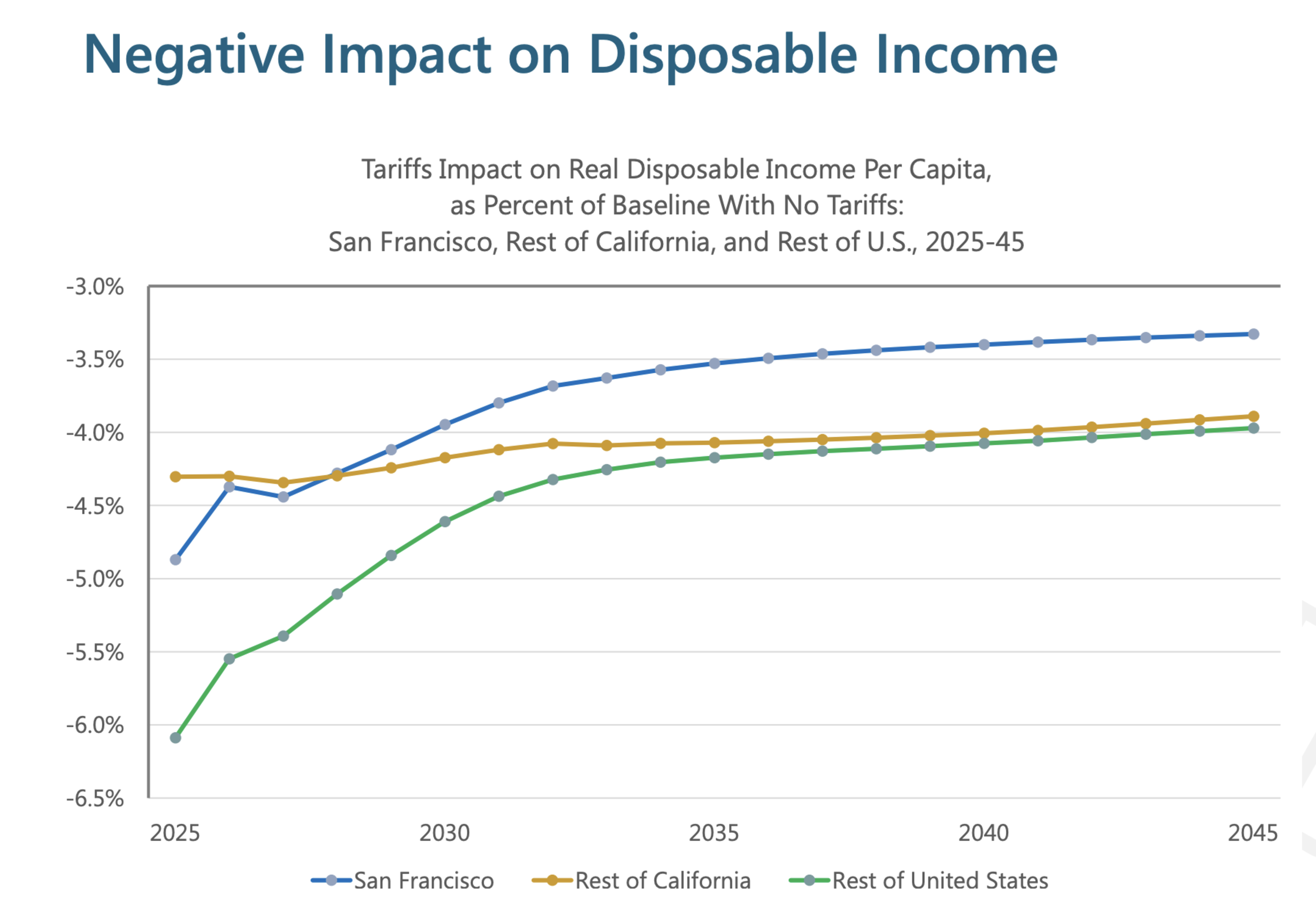San Francisco has its first concrete sense of how President Donald Trump’s tariffs could affect the city in the long term — and it’s not pretty.
San Francisco’s Office of Economic Analysis crunched the numbers (opens in new tab) to estimate the effect the tariffs — if they’re upheld by the Supreme Court (opens in new tab) and barring any response from the Federal Reserve — could have on the economy over the next 20 years.
In short, the city will lose jobs, and workers will have less disposable income as tariffs drive sustained price increases on many goods.
Nearly every industry in SF will likely shed jobs, according to the analysis, which the Controller’s Office began working on in April. The job losses will be mainly attributable to reduced investment and demand driven by higher prices for just about everything. The business and professional services industry — including most tech jobs — will be hit hardest, followed by trade and transportation, which includes wholesalers and truck drivers. In total, the city is expected to lose nearly 18,000 jobs by 2045.

Meanwhile, disposable income for San Franciscans will shrink. In the next two decades, the impact of tariffs is expected to reduce personal spending power by an average of 3.7%, about $5,600 per capita.
“It’s not that people will have less cash; it's that everything will be more expensive,” said Ted Egan, the city’s chief economist.

There is a silver lining: SF and California on the whole will fare better than the rest of the country due to being a hub of technology manufacturing (opens in new tab). As Asian technology imports, such as transistors from China, get more expensive, it will benefit domestic companies to build more components in the Golden State. (Apple, for instance, has said it plans to expand its manufacturing capabilities (opens in new tab) in California in response to tariffs.) As a result, jobs in electronic manufacturing are predicted to rise at the local and state levels.
San Francisco alone stands to gain more than 5,000 manufacturing jobs over the next 20 years, with 44% of that growth occurring in the computer hardware and electronics industry. If the courts uphold Trump’s tariffs, the city should look to capitalize on that opportunity, according to Egan.
“It’s worth planning for that and trying to make SF more of a target for that kind of work,” Egan said. “Is there scope to do more?”
Despite that boost, the tariffs will be one more challenge facing a city that has dealt with more than its fair share. Several years of brutal tech layoffs have taken a toll on overall employment rates, and the decrease in office workers has stressed small businesses and transit agencies.
“We’ve had a relatively weak recovery from Covid,” Egan said, “and this is certainly not going to speed it up.”
